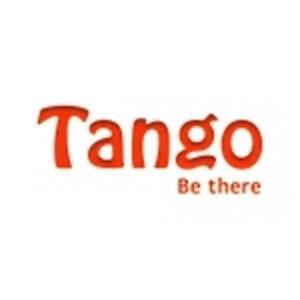Tango, a cross-platform mobile video calling startup, is today announcing its first expansion to a non-mobile platform: the Windows desktop. Sometime later this summer, the new PC software will debut, joining Android (phone and tablets) and iOS (iPhone, iPod Touch and iPad) as the third major platform launch for the company over the past nine months.

Impressive Growth
Tango now has over 18 million users in 190 countries using its video calling service. Unlike Apple’s proprietary FaceTime, Tango works over 3G, 4G and Wi-Fi, while FaceTime is Wi-Fi only. And even though Tango’s install base falls far short of Skype’s 170 million monthly connected users, not to mention its 600 million+ registered accounts, it’s growing fast. In fact, it’s growing twice as fast as Skype itself did during its first year, TechCrunch recently noted. Today, Tango adds a million users every two weeks, the company says.
We covered Tango barely 6 weeks after its September 2010 launch, when the application had been downloaded over 3 million times by mobile users. At the time, Tango shared that its ambitions were to move onto other platforms, including the desktop, the tablet and the TV.

Tango for Mac on the Horizon
Tango has already conquered one of those three platform (tablets), and has apps for the iPad and Android tablets available now. With the forthcoming launch of the new desktop software, the company is hoping to reach the wider PC market, consisting of 1.5 billion devices worldwide. By this time next year, Tango CEO Uri Raz says there will be 100 million customers using his company’s software.
The choice of going Windows-first on the desktop is obvious: sheer numbers. Tango CTO Eric Setton says that PC users comprise 70% of Tango’s user base. But a Mac application isn’t too far away. “We do plan to release on Macs and it’s in our product roadmap,” Setton says, “but we do not have a definitive timeline. It’s an important platform for us and we aim to be everywhere.”
$42 Million in Series B, Skype Investors Involved
Clearly Tango is on the fast track, having also just announced it has closed $42 million in its Series B round of funding led by Draper Fisher Jurvetson, notably the first outside investors in Skype, as well as venture capital led by Len Blavatnik and Alex Zubillaga.
How Tango is Different
For end users, what makes the service different from Skype is a minimalist feature set. You can’t buy credit or dial landlines, there isn’t an IM-like “chat” feature and you can’t accept calls from non-users. In other words, Tango does video chat and just video chat.
More importantly, though, it makes the process of doing video chat incredibly simple. There is no “setup” involved and you don’t have to create a username or password to join the service – you just input your phone number. Tango then automatically fills its address book with other Tango users it finds on your phone. A similar process will be offered in the PC version, too.
On the back-end, to make that setup process happen quickly, Tango keeps a centralized directory of its users. This is different than Skype, which is based on a peer-to-peer model of communication, where data moves between end users’ devices, not through Skype servers.
Tango is an interesting company to watch, somewhat like seeing Skype reborn as a mobile-first outfit. Whether or not Tango can ever reach the same heights as Skype, especially now as a Microsoft property with integrations planned in everything from IM to the Xbox, still remains to be seen.

















